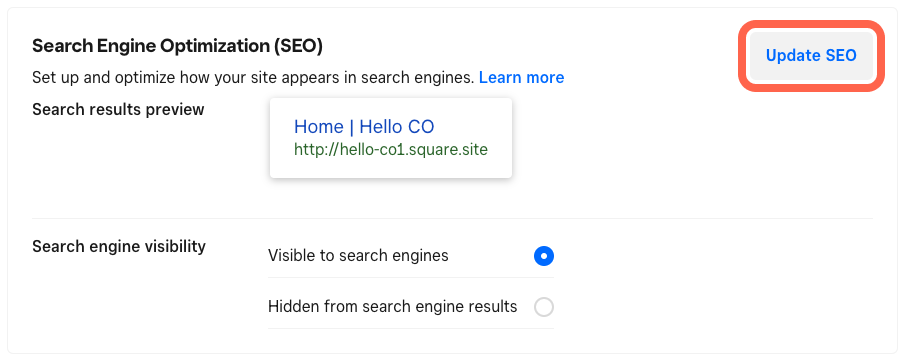Comprehending What Is Ruled Out a Default Medium in Google Analytics: Insights
Comprehending What Is Ruled Out a Default Medium in Google Analytics: Insights
Blog Article
Harnessing the Power of Non-Default Mediums in Google Analytics for Strategic Decision-Making
In the world of tactical decision-making, the use of Google Analytics is typically seen as a conventional technique for deriving insights from on the internet data. By venturing beyond the default mediums in Google Analytics and diving into different sources of data, companies can open a trove of useful info that may hold the key to gaining a competitive edge in the market.
Checking Out Non-Default Mediums in GA
By delving into alternative tools beyond the default setups in Google Analytics (GA), services can obtain deeper insights into their online website traffic sources and user actions patterns. While GA's default settings supply important info, exploring non-default mediums can provide a more detailed understanding of internet site efficiency. One such tool is UTM criteria, which enable businesses to track the efficiency of particular marketing projects or channels. By customizing these criteria for different campaigns, organizations can connect website traffic and conversions much more accurately, allowing them to maximize their marketing techniques.
This data can reveal how users involve with the website and help identify locations for enhancement to improve the customer experience. On the whole, by leveraging these different tools in GA, businesses can make even more educated decisions to drive their on the internet success.
Leveraging Unconventional Data Resources

These unconventional information resources can offer companies with unique viewpoints that may not be recorded by default metrics in Google Analytics. View evaluation of social media discusses can supply understandings into customer fulfillment degrees, while phone call monitoring data can disclose which advertising projects are driving phone inquiries. By integrating these non-traditional sources of information right into their analytics approach, organizations can make even more educated choices, optimize advertising and marketing efforts, and enhance general efficiency based on an all natural sight of their online tasks.
Making The Most Of Insights Beyond Requirement Channels
To extract deeper insights beyond the requirement networks in Google Analytics, businesses need to strategically diversify their data resources. what is not considered a default medium in google analytics. While Google Analytics provides valuable information on web site web traffic and customer behavior, integrating additional data from non-default tools can offer an extra detailed view of efficiency and client communications. By incorporating information from social media sites systems, e-mail advertising and marketing campaigns, CRM systems, and offline resources, organizations can obtain a holistic understanding of their audience's journey and preferences

Enhancing Strategic Decision-Making With Analytics
In leveraging a varied variety of information sources beyond basic networks, companies can enhance their critical decision-making by harnessing the power of analytics to educate and direct crucial organization choices. By integrating innovative analytics tools and strategies, organizations can reference acquire much deeper understandings right into customer habits, market trends, and operational efficiency. With the analysis of information from numerous resources such as social networks, mobile apps, and customer feedback, organizations can create a much more comprehensive understanding of their target market and market dynamics.
Analytics makes it possible for businesses to recognize patterns, fads, and connections that may not be immediately evident through traditional information analysis approaches. By leveraging these insights, companies can make more educated choices relating to product advancement, advertising strategies, and resource appropriation - what is not considered a default medium in google analytics. Furthermore, analytics can aid organizations track the performance of their initiatives in real-time, allowing for quick changes and optimizations to improve total efficiency
In essence, the strategic combination of analytics into decision-making procedures encourages businesses to stay nimble, affordable, and receptive to advancing market conditions. By embracing analytics as a core element of their tactical toolkit, organizations can drive growth, advancement, and long-lasting success.
Revealing Competitive Benefits in Information
By delving into the depth of information insights, services can efficiently reveal competitive advantages that move them in advance in the marketplace landscape. In today's data-driven world, business are progressively recognizing the importance of leveraging information to acquire a competitive side. By analyzing numerous data factors such as client habits, market browse around these guys trends, and competitor performance, companies can draw out useful understandings that educate calculated decision-making.
One key facet of discovering affordable advantages in information is identifying patterns and trends that give special insights right into customer preferences and market dynamics. By making use of advanced analytics tools like Google Analytics, businesses can track individual communications, internet site web traffic, and conversion prices to understand client actions better. This, in turn, allows companies to tailor their advertising approaches, item offerings, and consumer experiences to fulfill developing demands successfully.
In addition, information analysis can additionally unveil untapped opportunities for innovation and growth. By determining gaps on the market or locations where rivals fail, businesses can establish official site new product and services that address unmet requirements and differentiate themselves from the competition. Ultimately, leveraging data to uncover affordable benefits is not nearly gathering info but concerning converting it right into actionable approaches that drive success in today's affordable company setting.
Verdict

By venturing past the default tools in Google Analytics and diving right into alternate resources of data, companies can open a trove of important information that may hold the key to acquiring a competitive edge in the market.Checking out beyond the basic data resources in Google Analytics, organizations can unlock valuable insights by tapping right into unusual data streams for a much more detailed understanding of their online efficiency. Leveraging non-traditional information sources involves utilizing information from different channels such as social media platforms, customer evaluations, phone call tracking systems, email advertising and marketing metrics, and even offline sources like in-store foot website traffic information.To remove much deeper understandings past the requirement networks in Google Analytics, businesses need to strategically expand their data resources.In leveraging a diverse range of data resources beyond standard channels, organizations can improve their critical decision-making by harnessing the power of analytics to notify and direct vital business decisions.
Report this page